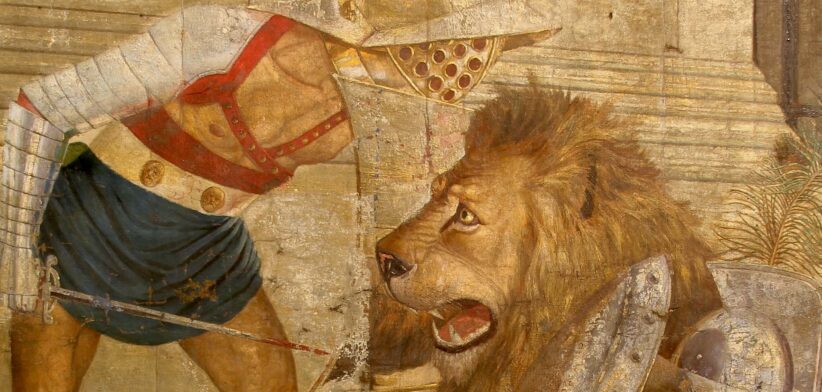The first physical evidence of a Roman gladiator battling a lion has been found in England.
Researchers say bite marks found on a skeleton discovered in a Roman cemetery in York were the first archaeological evidence of gladiatorial combat between a human and a lion.
University of York Lecturer Malin Holst said the skeleton was excavated and examined from one of the best-preserved gladiator graveyards in the world at Driffield Terrace.
“The bite marks were likely made by a lion, which confirms that the skeletons buried at the cemetery were gladiators, rather than soldiers or slaves, as initially thought and represent the first osteological confirmation of human interaction with large carnivores in a combat or entertainment setting in the Roman world,” Ms Holst said.
Professor Tim Thompson, from Maynooth University, Ireland, said current day understanding of Roman gladiatorial combat and animal spectacles had to this point relied heavily on historical texts and artistic depictions.
“This discovery provides the first direct, physical evidence that such events took place in this period, reshaping our perception of Roman entertainment culture in the region.”
Ms Holst said the lion bite wound, which was confirmed by comparing it to sample bites from a lion at a zoo, was not healed and was therefore likely to have been his cause of death.
“This is a hugely exciting find because we can now start to build a better image of what these gladiators were like in life, and it also confirms the presence of large cats, and potentially other exotic animals, in arenas in cities such as York, and how they too had to defend themselves from the threat of death.”
Read the full study: Unique osteological evidence for human-animal gladiatorial combat in Roman Britain.








